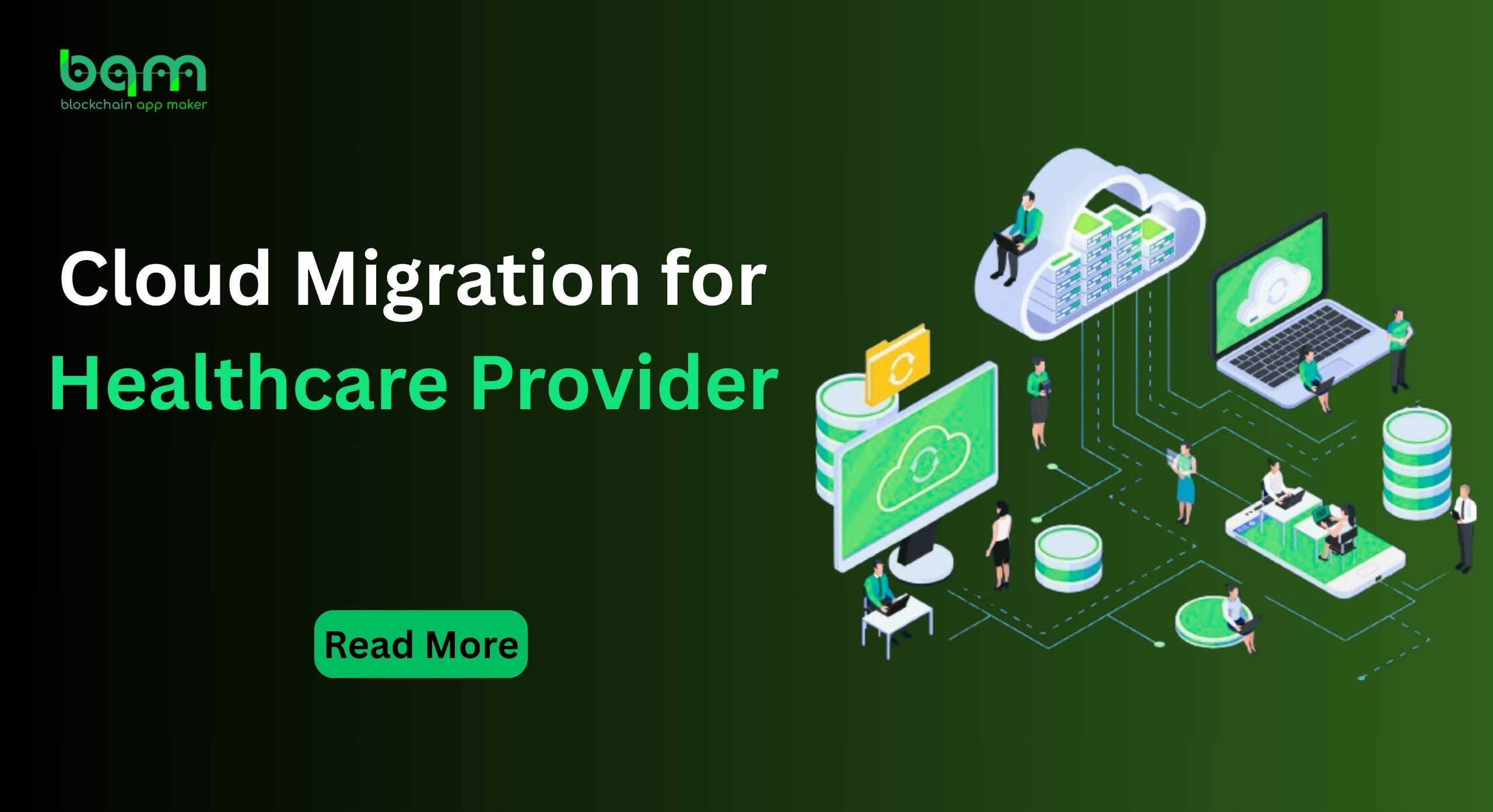If companies migrate data, apps, and other business components from on-premises infrastructure to cloud-based platforms, they can benefit in terms of flexibility, improved security, lower costs, and access to emerging technologies such as artificial intelligence and machine learning. To achieve this, some ways could be to architect so that it takes full advantage of cloud-native services, re-platform, or even use a lift and shift approach to existing workloads. There are public, private, and hybrid cloud options for companies to choose from.
Project Overview:
- A big known health care organization had their clinics and hospitals operating on an old patient management system that was integrated with applications in-house for billing, scheduling, and electronic health records.
- This infrastructure led to a reduction in the performance of such systems, more downtime, poor handling of patient data, and integration issues with newer technologies.
- All these were sorted out when the organization migrated to a cloud environment, thus making integration with modern technologies straightforward and improving the operational efficiencies.
Challenges:
Data Security & Compliance: Legacy systems could not comply with the current standards of data security and compliance, for example, Health Insurance Portability and Accountability Act requirements in the United States. It then became one of the critical challenges: how to ensure the security of patient data in transit as well as in rest.
Scalability Issues: As the healthcare provider was expanding, the on-premises infrastructure could not scale efficiently, and the system would often shut down, data retrieval would be slow, and the experience of both the medical staff and the patients would be miserable.
Use Integration to Modern Technologies: The current doctor face the difficulty of integrating any newer technologies such as that of telemedicine platforms and, using AI diagnostic tools, within their infrastructure.
System Inefficiencies: There were manual workflows and disintegrated systems, which led to delays in patient record, billing, and other important health care processes that affected the service delivery and patient satisfaction.
Solution:
The health provider migrated the whole IT infrastructure, which comprised patient management systems, clinical applications, and billing software, into a secure and scalable cloud environment.
- Cloud Platform Selection: With multiple offerings by different cloud providers, the health organization decided on Microsoft Azure based on security robustness and HIPAA compliance along with the possibility of scaling up rapidly. Thus, this made cloud services offered by Azure quite suitable for health organizations seeking a secure and compliant environment for storing patient data.
- Data Migration & Security Enhancements: The company first migrated all patient data stored on the on-premises servers to secure Azure cloud storage, and all this was encrypted, rest and in transit, too. In addition to that, the company used Azure’s AI-powered security solutions to track breaches and compliance.
- Application Modernization: The legacy EHR system was re-architected to exploit the full benefits of cloud capabilities, including elasticity, high availability, and rapid disaster recovery. A cloud-native application was designed to enable medical staff to access patient records anywhere, thereby improving collaboration and care for patients.
- Integration with telemedicine & AI tools: With this cloud migration, integration with telemedicine platforms and AI-based diagnostic tools is easier, giving health care providers the ability to perform remote consultations and make informed decisions based on predictive insights.
- Automation & Workflow Optimization: the healthcare provider automated part of its operational workflows such as billing and scheduling of appointments using cloud-based applications. This eliminated human errors, relieved staff workload, and improved patient experiences.
Key Features of the Cloud Migration Solution:
- Cloud Security and Compliance (HIPAA Compliance):
- Encryption: Sensitive patient data was stored and transferred utilizing Azure’s sophisticated encryption capabilities, which also employed cutting-edge encryption techniques even while in transit.
- Features in Compliance: In order to keep well within the necessary standards, they created frameworks for HIPAA compliance during the design process. That would thus ensure both safe storage and access to retrieve patient data without violating any legal provisions.
- AI-Powered Security: AI-based security solutions that scan the system continuously, identify security risks in real-time, and block all unauthorized access or data exploitation.
- Scalability and High Availability:
- Elastic Cloud Infrastructure: Storage as well as processing power need to scale up without causing either downtime or performance degradation when using Azure’s scalable infrastructure.
- High Availability: There would not be any disruption in the availability of critical systems during the outages since disaster recovery solutions were implemented along with global data centers of Azure. That would thus ensure both safe storage and access to retrieve patient data without violating any legal provisions.
- Cloud-Native Application Modernization:
- Re-architecting EHR Systems: The legacy EHR system is re-architected to natively function in a cloud environment. For optimal performance and scalability, the technology utilizes micro services and containerization.
- API Integration: APIs were used to integrate the modernized EHR with telemedicine platforms, AI diagnostics tools, and other healthcare applications to form a well-integrated ecosystem.
- Remote Access and Collaboration:
- Cloud-based access: Doctors can safely access the patient records from anywhere, thus improving the collaboration and reducing the time of diagnosis. It was very useful for multi-site healthcare organizations where the staff could work across locations.
- Telemedicine Integration: Telemedicine integration with several telemedicine platforms has enabled doctors to conduct virtual consultations with patients and hence make care more accessible and convenient for the patients.
- Automation & Workflow Optimization:
- Automated Billing and Scheduling: Cloud technology has automated billing and payment processes as well as scheduling, reducing administrative tasks and making it impossible to experience mistakes that occur with human efforts.
- Work Management: The critical process automation of the entire operation for admitting a patient, in its entire course from admittance to discharge, made operational efficiency of the service line even better.
- AI and Data Analytics:
- Predictive Analytics: The use of AI and ML-based analytics tools starts to integrate Predictive analytics into the services delivery of patient care that was built through the development of a tailored treatment plan and even the early warning signs.
- Data-Driven Decision Making: The analytics of data provided by this cloud platform enabled the action ability of insights to operational efficiency improvement in patient outcomes and optimization of resources with the health care provider.
- Cost-efficient
- Pay-as-You-go Model: With this model, it charged using pay-as-you-go by the healthcare provider because this was not going to hold additional cost for not holding it on premises infrastructures.
- Lowered maintenance expense: Cloud migration has conserved much expenditure incurred on-site servers since it brought down hardware and also maintenance costs.
Results:
Improved Data Security & Compliance: The process to migrate to Azure helped the healthcare provider gain HIPAA compliance; thus, it ensured that the data about the patients would be completely protected. Within Azure, there are different security tools and protocols of encryption that help protect the sensitive information and hence reduce data breaches.
Scalability & Reliability: Migrating to the cloud helped the health services provider scale its infrastructure easily because the patient data was growing as did the operations. With the capabilities provided through Azure auto-scaling and high availability, downtime is virtually negligible, ensuring continuous access to those critical systems.
Enhanced Collaboration & Patient Care: More Accessible Collaboration & Patient Care Medical professionals would then be able to have access to the patients’ records in real time regardless of the location. There would be improvement in collaboration between departments along with fast decision-making. Access to care would be made available for more remote area patients as virtual consultations became possible through telemedicine.
Cost savings: There was no expensive hardware purchase on the premises, not to mention the maintenance of them. IT operational costs for this healthcare provider significantly dropped because they only pay for what is consumed. As it uses the pay-as-you-go model, that is how it works in Azure.
Operational Efficiency: With cloud-native and automation applications, the operational process was made easier by reducing the administrative overheads and general workflow. This also helped in achieving quicker cycles of payments and short waiting times for patients as the billing and scheduling process was accelerated in the same manner.




